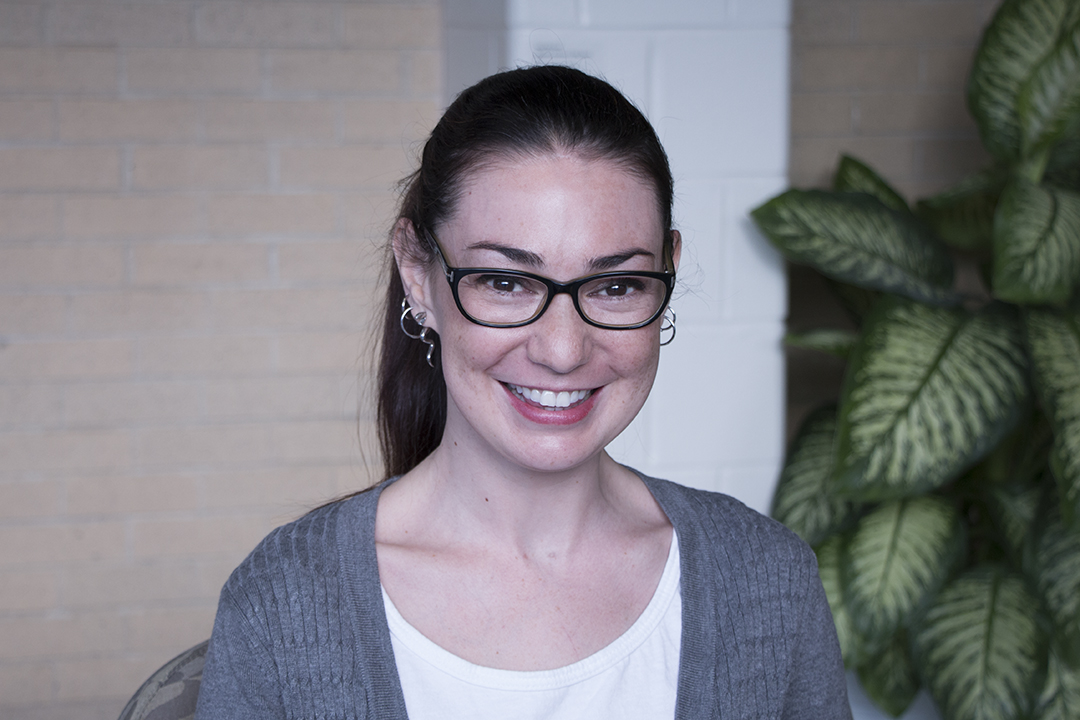
Veterinarian’s career path full of interesting curves
When people picture a career as a veterinarian, most probably think of the traditional veterinary clinic where practitioners care for a mix of large and small animal patients.
By Taryn RiemerBut as Dr. Alexandra Reid has discovered, the world of veterinary medicine offers many more options.
“I didn't realize when I started out how many non-traditional opportunities there are for veterinarians in the world and how interesting and rewarding a lot of those jobs are,” says Reid, a 2007 graduate of the Western College of Veterinary Medicine (WCVM).
In February 2018, Reid returned to her alma mater to talk about her veterinary career and her Indigenous background during several presentations at the college. While Reid was born in Vancouver, B.C., her roots are in Saskatchewan: she’s a member of Muskeg Lake Cree Nation near Marcelin, Sask. Before attending the WCVM, Reid earned a Bachelor of Science degree in Animal Biology at the University of British Columbia.
When Reid was younger, she always liked animals and even spent some time working at the Vancouver Aquarium. But when she decided to apply for veterinary school, she wasn’t sure if it was the right path.
“I always liked biology, but I wasn't sure if a vet was the right thing for me. Even when I got accepted to the WCVM I was a little bit conflicted. I thought ‘Is this the best way to pursue what I like doing?’” recalls Reid.
But as Reid started to get involved in the veterinary program and in jobs outside of school, she found there were ways she could build on her interest in biology as a veterinarian.
“I worked in the summer for the Canadian Wildlife Health Cooperative (CWHC) and that’s when I found veterinary pathology,” says Reid. “It was really exciting and interesting to learn how complementary it was to other forms of veterinary medicine.”
And after that, she was hooked. Reid went on to do her PhD degree in Comparative Pathology (specializing in fish) at the Ontario Veterinary College in Guelph, Ont. After finishing her degree, she was hired by the Ontario Ministry of Agriculture, Food and Rural Affairs in 2012.
“I was a veterinary scientist in the provincial government’s Food Inspection Branch. So basically I would get pictures and videos from the abattoirs of animals, both alive and dead, and I would determine if the carcasses were safe to eat or not,” says Reid, who is based in Guelph.
For Reid, the job has come with its own interesting challenges.
“Toronto is a very ethnically diverse city so there’s a lot of people who want to eat products that are not what our culture has thought of as traditional food products. For example, burnt sheep trachea is something that’s desired in some ethnic markets,” says Reid.
“So, part of my job is to do research and figure out what makes it safe to eat and what the abattoirs have to do to make it safe to eat and sell to the public.”
Although Reid has enjoyed her time working with the abattoirs, she has recently taken a secondment from her regular job to learn about emergency management.
“I’m currently the lead veterinarian, preparedness and planning, in the Office of the Chief Veterinarian for Ontario. This is a very interesting role because veterinarians aren’t typically thought of in emergency preparedness, but I think the education we have is very complementary to disaster preparedness and planning.”
Since graduating from the WCVM, Reid has had the opportunity to do a lot of new and interesting things, and she encourages veterinary students to look beyond private practice at other less traditional roles in the veterinary profession such as regulatory medicine.
“Be open to doing new things. When I started working for the CWHC, I wasn’t sure what I was going to find and I was shocked at just how much I enjoyed it,” says Reid.
